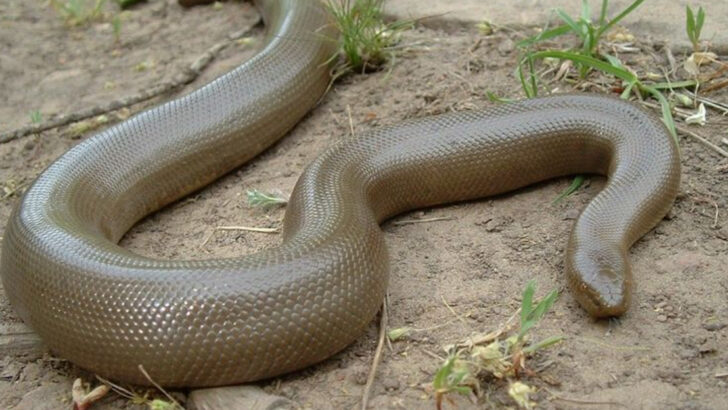Snakes tend to get a strong reaction—some people are fascinated, others would rather not cross paths at all. But beyond the common garter snake or rattlesnake, the U.S. is home to a surprising mix of species that don’t quite fit the mold. Strange colors, unexpected habitats, or behaviors that seem more like science fiction than wildlife—there’s a lot more variety out there than most folks realize.
These unusual snakes often fly under the radar, not because they’re rare (though some are), but because they don’t always show up in the usual places. Some are tiny and secretive, others boldly patterned or oddly adapted to their environment. If you think all snakes look and act the same, these standouts might change your mind.
Louisiana Pine Snake
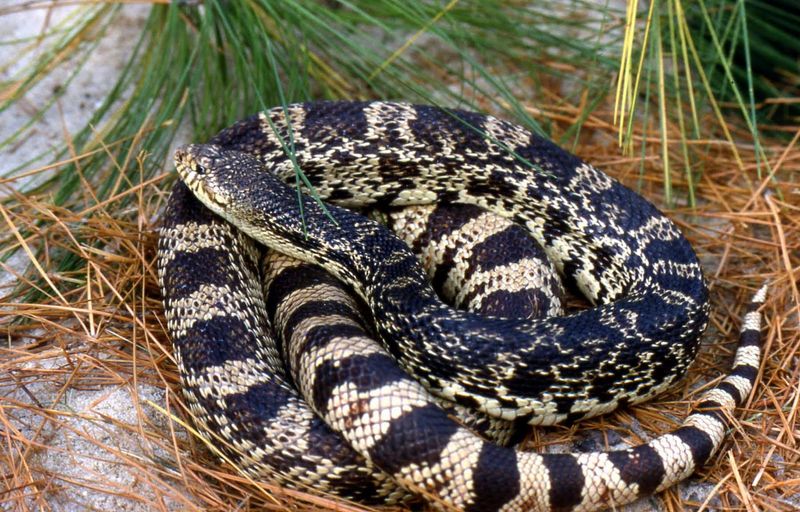
The Louisiana Pine Snake is a rare gem found in the longleaf pine forests of Louisiana and Texas. Known for its elusive nature, it is seldom seen in the wild. Its coloration helps it blend seamlessly into its environment, a testament to its survival instincts.
This snake plays a vital role in controlling rodent populations, highlighting its importance in the ecosystem. Despite its benefits, it faces threats from habitat destruction, pushing it towards endangerment. Efforts to conserve its natural habitat are essential. Spotting one is a rare and remarkable experience for wildlife enthusiasts.
Mud Snake

Have you ever seen a snake that glows in the water? Meet the Mud Snake, a striking reptile gracing the swamps of the southeastern U.S. Its glossy black scales, contrasted by a vibrant red belly, make it a true spectacle.
This nocturnal hunter thrives in wetlands, preying on aquatic creatures like salamanders. Despite their fierce appearance, Mud Snakes are non-venomous and harmless to humans.
Their elusive nature adds to their mystique, often leaving people bewildered by their rare sightings. This snake’s beauty and secretive habits make it a cherished species among reptile enthusiasts.
Desert Kingsnake
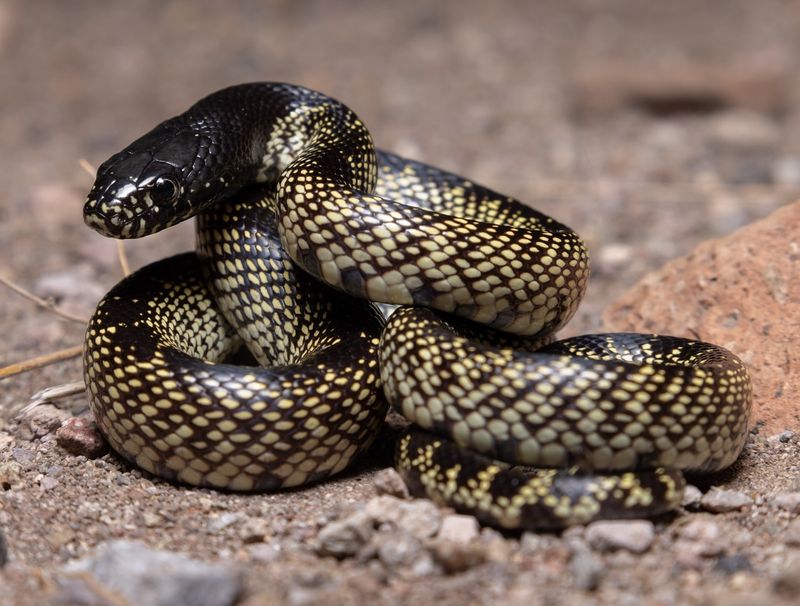
In the arid landscapes of the southwestern U.S., the Desert Kingsnake reigns supreme. This snake is not only a master of disguise but also a formidable predator. Its striking yellow and black pattern provides perfect camouflage in its sandy home.
Famous for its immunity to rattlesnake venom, it preys on these venomous foes, turning the tables in the wild. Despite its fearsome diet, the Desert Kingsnake is non-venomous and poses no threat to humans.
Its adaptability and resilience make it a fascinating subject of study, captivating those who venture into its harsh domain.
Hognose Snake
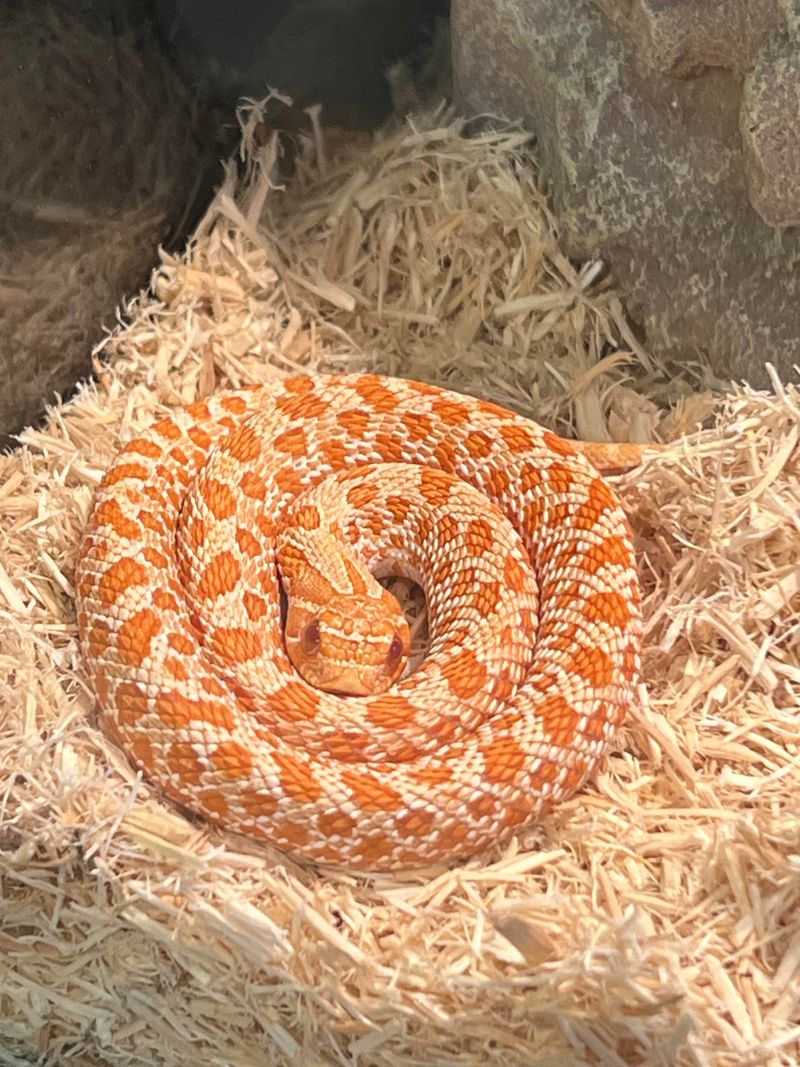
Known for its playful antics, the Hognose Snake is famous for its dramatic defensive displays. When threatened, it might flatten its neck like a cobra or play dead, adding intrigue to its personality.
These snakes are found across various parts of the U.S., favoring sandy soils where they hunt toads. Their distinct upturned snout aids in burrowing, an adaptation that sets them apart. Non-venomous and generally harmless, they make charming residents of their habitats. Observing their behavior is like watching nature’s theater unfold on a small scale.
Eastern Coral Snake

With colors that warn ‘danger,’ the Eastern Coral Snake is both beautiful and enigmatic. Found in the southeastern U.S., this snake’s vibrant red, yellow, and black bands are recognized by many.
Unlike most venomous snakes, it has a small mouth, relying on a specific biting style to deliver venom. Yet, encounters with humans are rare, as Coral Snakes are elusive by nature.
Their secretive lifestyle and striking appearance have inspired many myths and legends, adding an air of mystery. These snakes are a reminder of nature’s beauty wrapped in cautionary colors.
Eastern Indigo Snake
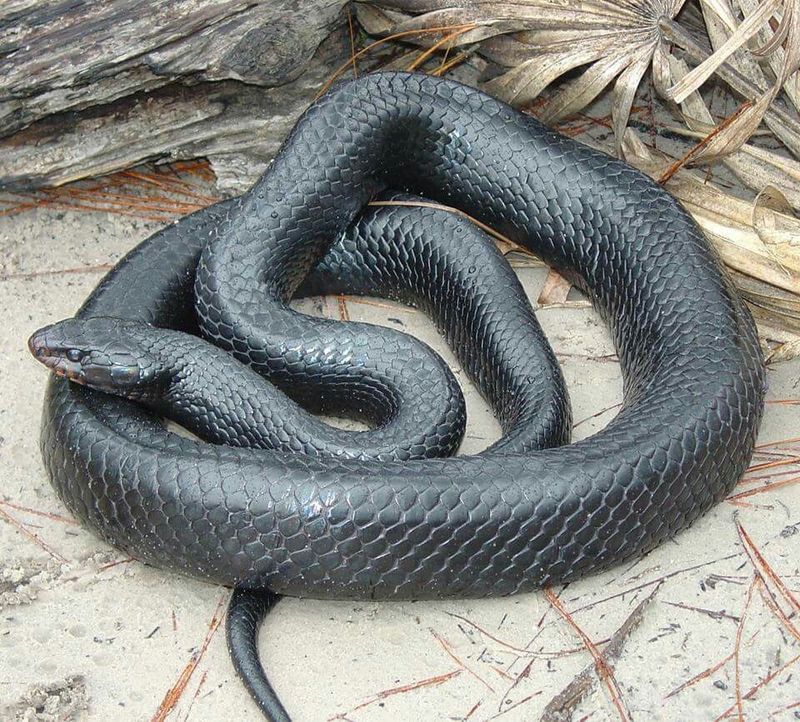
With a striking, glossy black appearance, the Eastern Indigo Snake commands attention. Native to the Southeastern U.S., these non-venomous giants can grow up to eight feet long. Their docile nature belies their impressive size, making them a favorite among snake enthusiasts.
Unlike many snakes, they are diurnal, often spotted basking in the sun. Their diet includes a variety of small animals, showcasing their role in maintaining ecological balance. Conservation efforts are crucial for their survival, as habitat loss threatens their existence. This species truly embodies the beauty of America’s natural wildlife.
Texas Indigo Snake
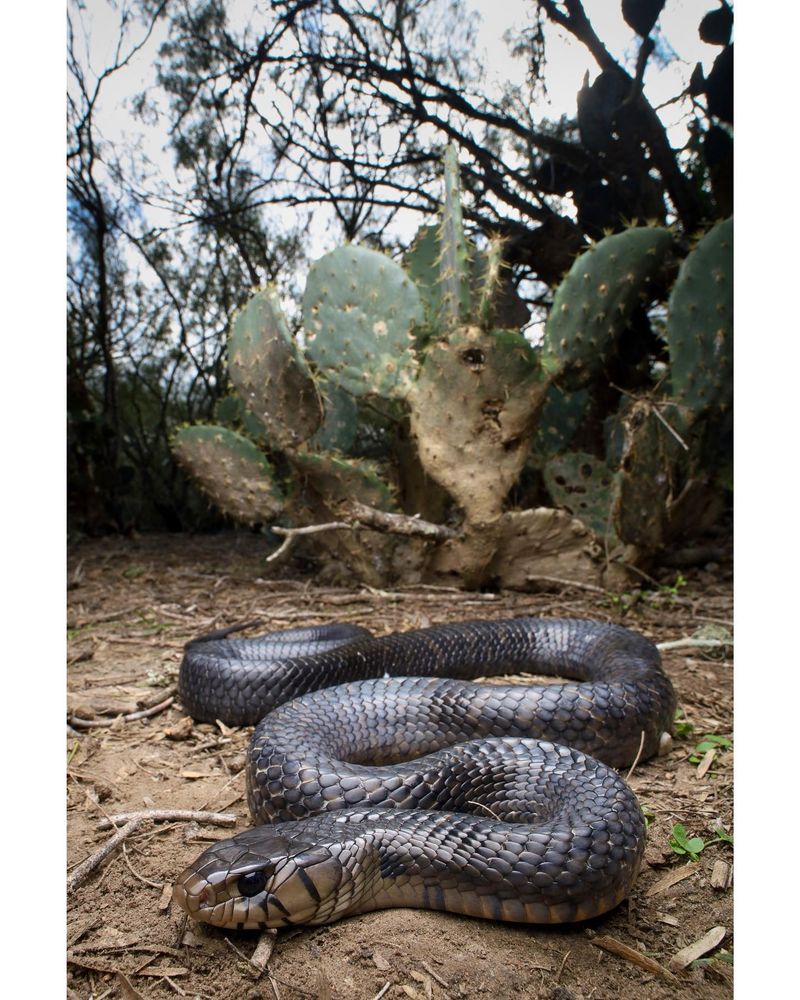
The Texas Indigo Snake, a legend among snake enthusiasts, commands attention with its sheer size and elegance. Stretching over eight feet, this non-venomous giant roams the Texas grasslands.
Its diet is as diverse as its habitat, including rattlesnakes, rodents, and birds. Its dark blue scales glisten, shimmering in the sunlight like a living shadow.
Known for its curiosity and intelligence, the Texas Indigo is a beloved subject for researchers and nature lovers alike. Its presence marks a healthy ecosystem, a guardian of balance in its wild domain.
Southern Copperhead
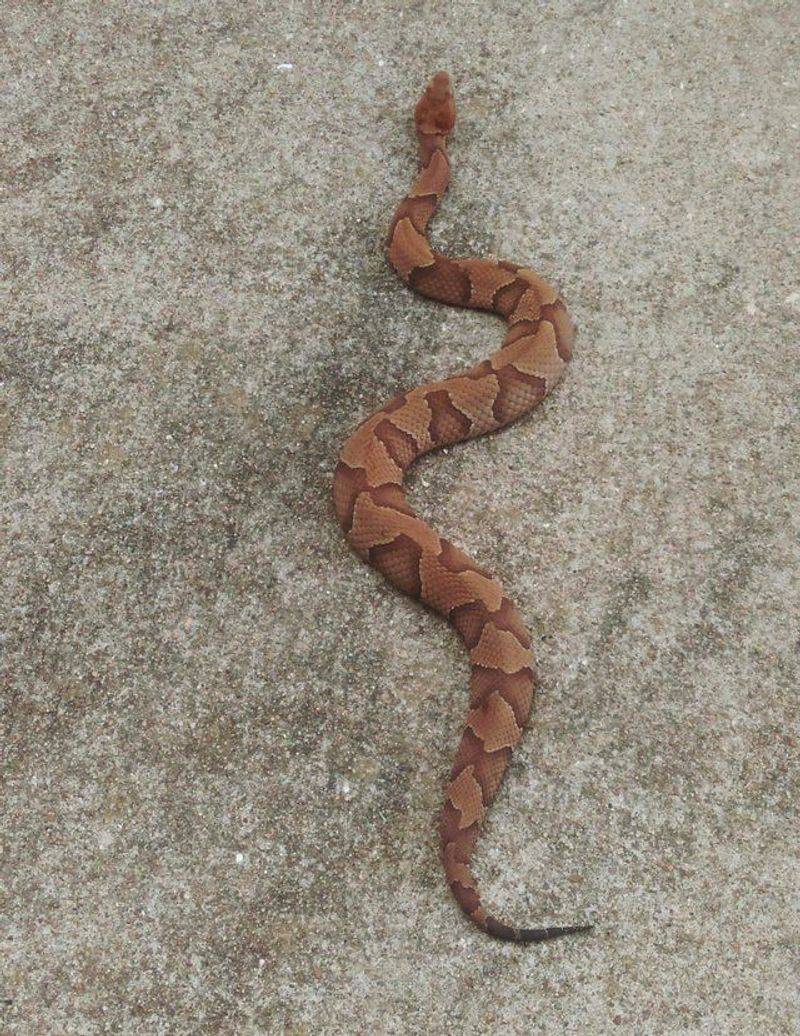
Cloaked in shades of copper and brown, the Southern Copperhead is a master of camouflage. Found throughout the southeastern U.S., its coloration helps it blend into the forest floor, making it nearly invisible to the untrained eye.
Although venomous, its bites are rarely fatal to humans, and it prefers to avoid confrontation. This snake’s ability to adapt to suburban environments has made it both admired and feared.
Its role in controlling rodent populations highlights its ecological importance, reminding us of the intricate balance within nature.
Ring-necked Snake
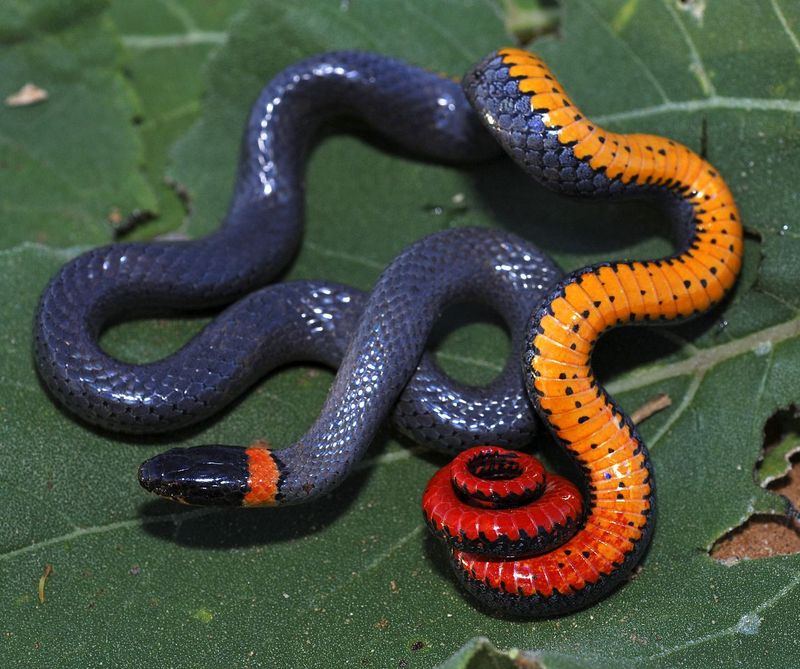
Small but captivating, the Ring-necked Snake is easily recognized by its vivid orange ring around the neck. Its secretive nature means it often goes unnoticed in its habitat, which spans much of the United States.
Primarily nocturnal, this snake is more likely to be encountered during damp, mild nights. Their diet consists of small amphibians and insects, contributing to their ecological role. Despite their widespread presence, they’re rarely a nuisance to humans. Observing one in its natural setting offers a glimpse into the hidden diversity of America’s snake population.
Banded Rock Rattlesnake
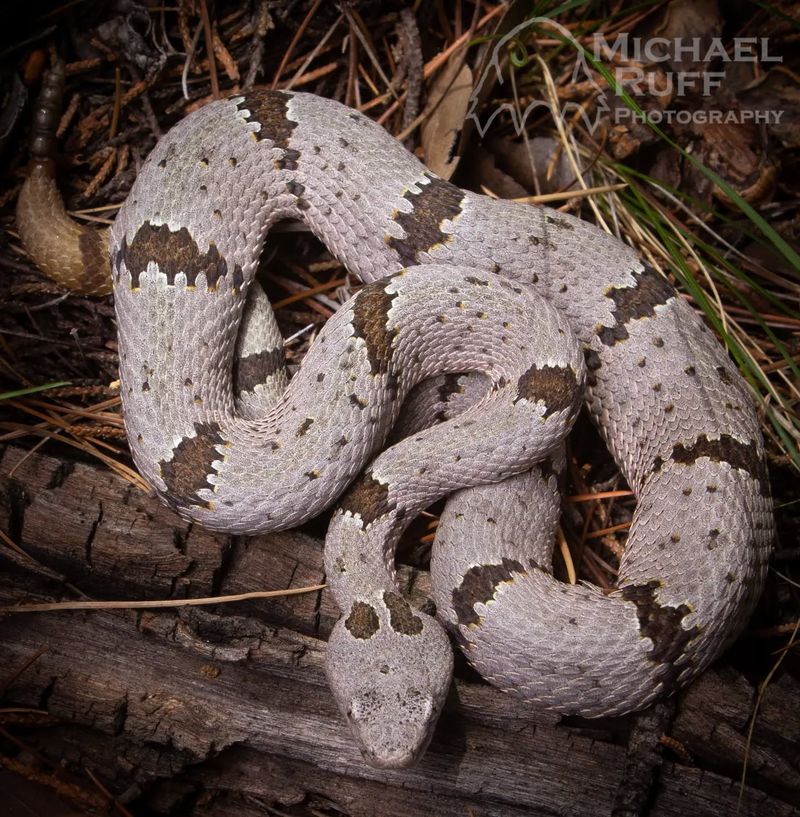
In the rocky landscapes of the southwestern U.S., the Banded Rock Rattlesnake blends seamlessly with its environment. This small, venomous snake sports gray and green bands that mimic the stones it calls home.
Its rattle serves as both a warning and a tool for communication, a testament to its adaptability. Despite its venom, it remains non-aggressive unless provoked.
Researchers are fascinated by its behavior and adaptability, studying its role in the ecosystem. Its elusive nature and striking appearance make it a subject of intrigue and caution.
Rainbow Snake
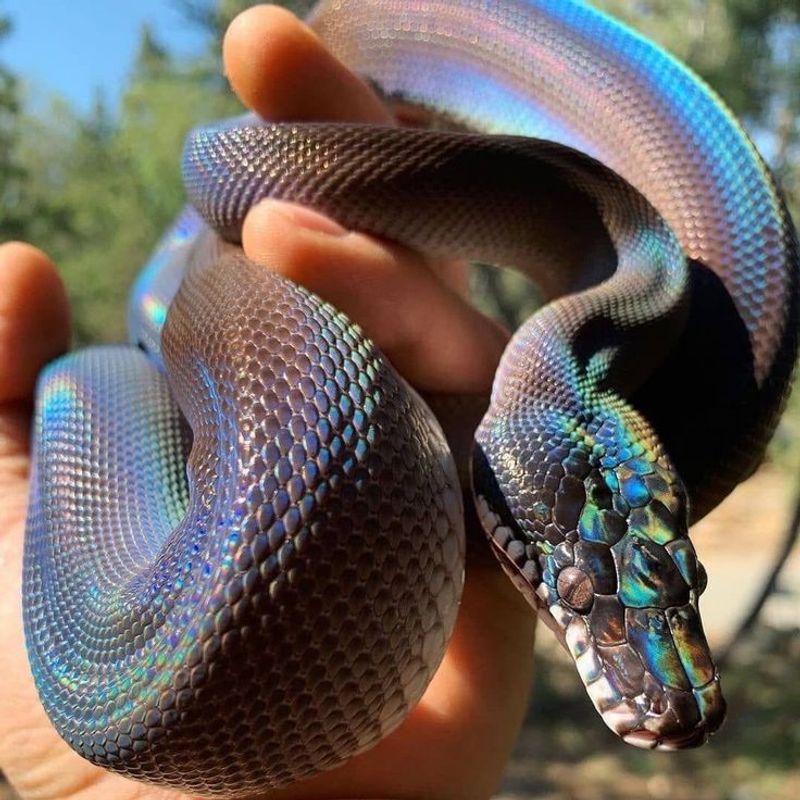
The Rainbow Snake, a jewel among serpents, graces the wetlands of the southeastern U.S. With iridescent scales, it appears to shimmer in a dance of colors as it moves.
This non-venomous snake preys on eels, its specialized diet reflecting its unique adaptation. Rarely seen by humans, it thrives in hidden corners of marshes and rivers.
Its beauty has inspired many legends, with its presence symbolizing mystery and enchantment. The Rainbow Snake is a reminder of the hidden wonders of nature, a secret waiting to be discovered by the fortunate few.
Rubber Boa
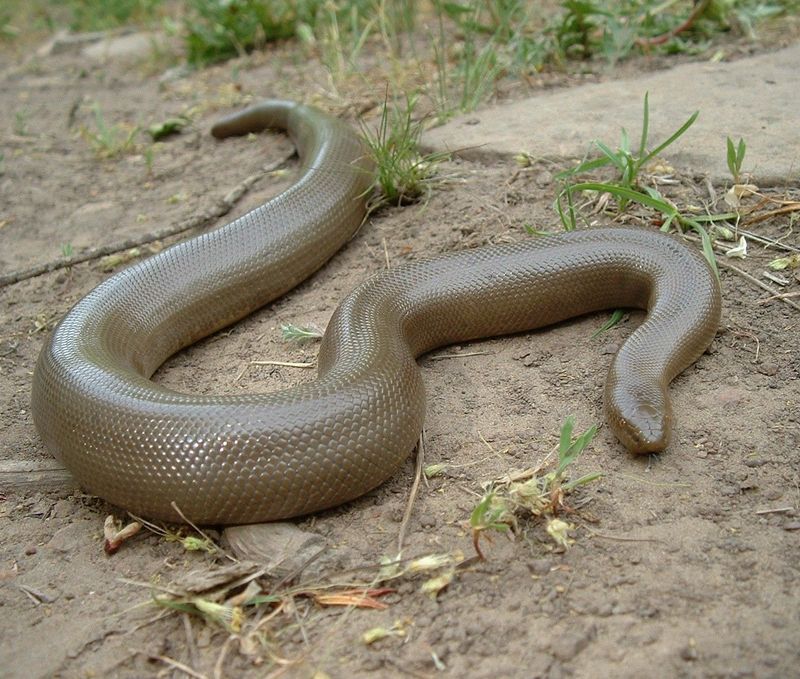
With skin that feels like rubber, the aptly named Rubber Boa is a master of camouflage. Residing in the cooler regions of the Pacific Northwest, this snake is often mistaken for a piece of tubing due to its appearance.
Its gentle nature and secretive lifestyle make it a favorite among researchers. Feeding primarily on small mammals, it plays a crucial role in its ecosystem. Despite its elusive nature, it remains non-threatening to humans. Spotting one is akin to finding a hidden treasure in the tranquil forests it calls home.
Scarlet Kingsnake

The Scarlet Kingsnake dazzles with its vivid red, black, and yellow bands, a mimicry of the venomous coral snake. This deceptive appearance is a clever survival tactic, warding off predators who mistake it for its dangerous cousin.
These snakes are commonly found in the Southeastern U.S., thriving in forests and grasslands. Their diet primarily consists of smaller snakes and lizards, playing a crucial role in controlling local populations. Although they resemble the feared coral snake, Scarlet Kingsnakes are non-venomous, proving that appearances can indeed be deceiving in the animal kingdom.
Long-nosed Snake
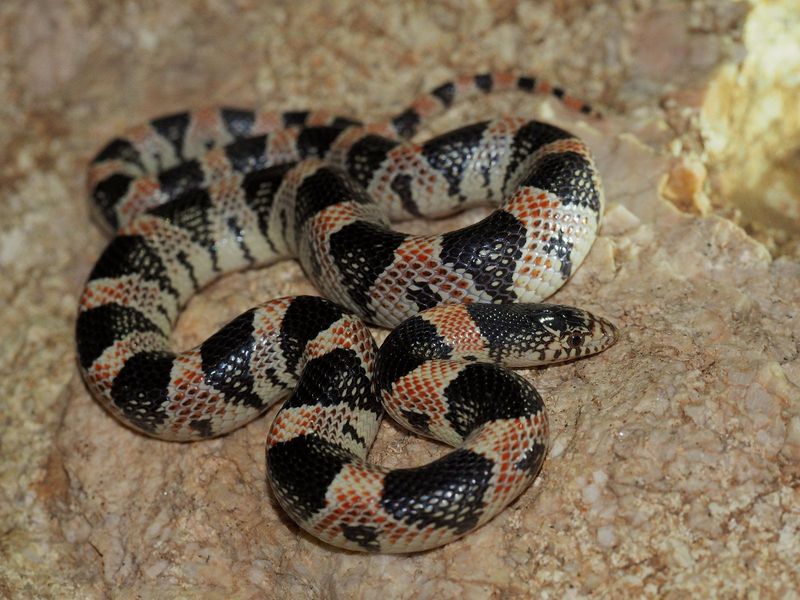
The Long-nosed Snake is an artist of the desert, blending seamlessly into its arid surroundings. Its elongated snout is not just for show; it aids in burrowing through sand to escape the desert heat.
Found primarily in the Southwestern U.S., this snake is a nocturnal wanderer. Its diet includes lizards and small mammals, highlighting its role in the desert ecosystem. Despite its harsh environment, it thrives and adapts, showcasing nature’s resilience. Encountering one during a desert excursion offers a unique insight into the adaptability of wildlife.
Mole Kingsnake
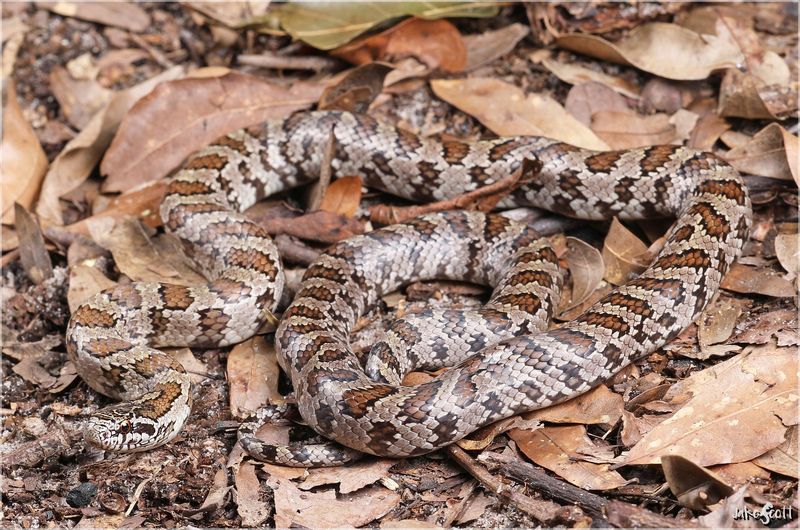
Beneath the forest floor of the Eastern U.S., the Mole Kingsnake makes its subterranean home. Its penchant for burrowing keeps it hidden from view, earning its name and elusive reputation.
This snake’s diet consists of small rodents, contributing to its vital role in controlling pest populations. Despite its reclusive nature, it poses no threat to humans. Its presence is a reminder of the unseen wonders that lie beneath our feet. For those lucky enough to unearth one, it’s a chance to appreciate the complexity of nature’s hidden networks.

